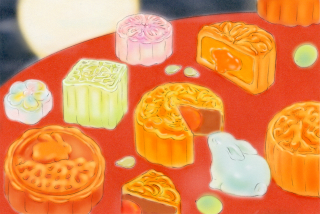A ban on some raw oysters from the Gulf Coast? Shucks
Tea parties aren’t the only place you’ll hear grumbling these days about the imposition of a “nanny state.” Just take a seat in any Louisiana oyster bar.
On a recent weeknight, Paul Stahls had just polished off a plate of raw oysters on the half-shell at Casamento’s Restaurant, one of New Orleans’ beloved seafood joints. He worried whether this culinary experience, so deeply ingrained in Louisiana culture, might be threatened by a U.S. Food and Drug Administration crackdown.
“Are you truly going to tell me that I can’t have a raw oyster?” the 33-year-old doctor said, with the incredulity of a Frenchman contemplating life without Camembert. “We’re going to let the government do that?”
The proposed federal policy, which takes effect in 2011, will ban the sale of Gulf Coast oysters intended for raw consumption that are harvested during the warm months, when they are more likely to carry a potentially deadly bacteria. The ban would not apply to oysters treated with bacteria-fighting technology.
But many oyster sellers say that too few of the expensive machines to treat the oysters are in place, and they are predicting an industrywide meltdown if the rule is enacted. Adding to their fears are the diners and restaurateurs who view the sterilization rule as a taste-altering -- almost blasphemous -- adulteration of the raw-oyster experience.
The FDA said the policy was necessary to prevent the 15 deaths per year that are attributed to the Vibrio vulnificus bacteria. In announcing the plan at a shellfish safety conference last month, FDA senior advisor Michael R. Taylor noted that attempts to solve the problem with an industry-endorsed education campaign have not worked.
Taylor also pointed to a stark reversal of fortune in California, which in 2003 banned the sale of untreated raw Gulf oysters harvested in the summer. Between 1991 and 2001, he said, California had 40 deaths attributed to Vibrio vulnificus. Since the ban, he said, there have been no deaths from the bacteria.
That may be well and good for California. But many Louisianians fear a nationwide policy could wreck a state industry that employs 3,500 people, has a $318-million annual impact on the economy and provides a third of the nation’s oysters.
Many here also are framing it as a case of big-government bullying from the Obama administration, which has vowed to reinvigorate the FDA’s regulatory agenda in the wake of numerous food safety scares.
FDA officials plan to meet in Washington today with members of the Louisiana congressional delegation to discuss the proposal, said FDA spokeswoman Rita Chappelle..
Mike Voisin, owner of Motivatit Seafoods Inc. in Houma, La., called the policy a “dictatorial decision.” He noted that most of the people sickened by the bacteria have existing immune system disorders, like AIDS or hepatitis. These people in particular, he said, have a responsibility to be careful about what they eat.
“To protect everybody from everything, we’d stop driving in cars. We’d stop driving in planes,” Voisin said. “We’d stop getting out of bed.”
Since becoming aware of the Vibrio threat in the early 1980s, the traditionally low-tech oyster industry has invented a number of methods to combat the bacteria. The techniques, thanks to a dash of Cajun ingenuity, have managed to keep the raw oysters’ shells -- and their prized, salty internal “liqueur” -- intact.
In Franklin, La., the AmeriPure Processing Co. Inc. treats its oysters by quickly soaking them in hot and cold water baths. Voisin’s company developed a water-pressure treatment. Other techniques use quick freezing, even irradiation. The FDA considers oysters treated under any of the new methods safe to eat.
One downside is that all of the processes, except irradiation, kill the oyster. Traditionally, oysters consumed at a raw bar are alive.
The treated oysters have their fans, but they have been greeted less than enthusiastically by some of New Orleans’ tradition-bound seafood connoisseurs, who say they can taste a difference.
“They terrible,” said Maria Jones, kitchen manager for Drago’s Seafood Restaurant in suburban Metairie, La. “Even cooked, they terrible.”
Mike Rogers, a veteran oyster shucker at Casamento’s, smiled dismissively at the very mention of the things, which he said he has encountered only once. “Naww,” he said. “They wasn’t like the regular oysters.”
Oyster sellers note that there are only three companies with treatment facilities in the Gulf Coast states that could effectively process oysters between April and October, when the ban will be in effect. But those facilities, they said, can handle only about 15% of the oysters harvested. Voisin expects the price of treated oysters to double or triple. He also said many mom-and-pop oyster sellers will go out of business because they won’t be able to afford a processing machine. One of his pressure machines would cost about $750,000.
Sal Sunseri Jr., co-owner of P&J; Oyster Co., a 133-year-old family business in the French Quarter, said he couldn’t imagine who would lend that kind of money to a food-service business in the depths of the recession. The ban could hit Sunseri’s company particularly hard: It has no treatment facility and, he said, in the hot months, more than 50% of his oysters are intended for raw consumption on the half-shell.
Federal officials say Louisiana could pass its own regulations for oysters consumed here, since the FDA only regulates food shipped between states. But that would only bring so much relief to businesses that export many of their oysters. Sunseri said he’d like to see the industry mount a legal challenge.
“There’s no reason in these economic times -- after what we’ve gone through as a region, through the storms -- to take away the livelihoods of not only the oystermen, but the restaurants,” he said, referring to hurricanes Katrina and Rita. “Because you will see restaurants go by the wayside.”
That is the primary concern of Tommy Cvitanovich, whose family runs Drago’s. Their flagship restaurant, a big, unpretentious place on a suburban side street, is locally famous for the freshness of its oysters. The Cvitanoviches own a refrigerated truck that makes daily trips to pick up dozens of sacks of unshucked oysters fresh from the docks in little towns like Lafitte, Port Sulfur and Hopedale. Every oyster, whether it is consumed raw, fried or char-grilled on an open flame, is shucked on premises by a small platoon of experts wielding mallets and knives.
Under the new rule, FDA officials said, Drago’s could still cook with these oysters. But the restaurant would not be able to serve them raw in the warm months.
That alone, Cvitanovich said, would probably hurt business. A treated oyster, he said, would complicate the allure of the raw product’s simple promise: “They were in the water today, I’m picking ‘em up tonight, and they’re going to be on the bar tomorrow.”
Opponents of the new rule often cite the small number of deaths from the Vibrio bacteria, but almost everyone agrees that Vibrio blood infections can be almost unfathomably gruesome, resulting in fever, chills, septic shock and blistering lesions. Many patients who do not die must have limbs amputated.
Jennie Bourgeois, 38, of Baton Rouge, La., said her father, who was diagnosed with potential liver problems, came down with a deadly case of Vibrio about two years ago after eating raw oysters at a dinner celebrating his 60th birthday.
“It literally ate him alive, inside and out,” she said.
Today, Bourgeois has no stomach for the gourmands’ anti-regulation argument.
“I don’t get what these people don’t get about it,” she said.
--
More to Read
Eat your way across L.A.
Get our weekly Tasting Notes newsletter for reviews, news and more.
You may occasionally receive promotional content from the Los Angeles Times.







